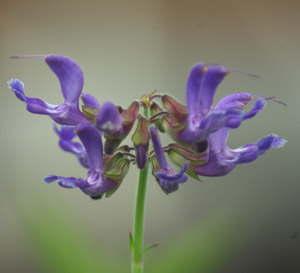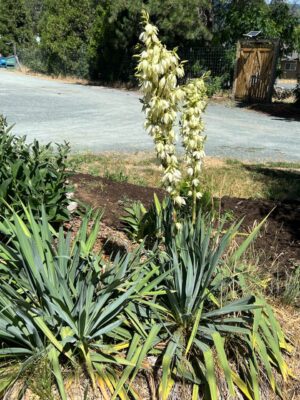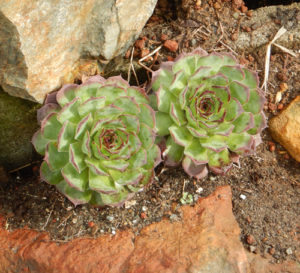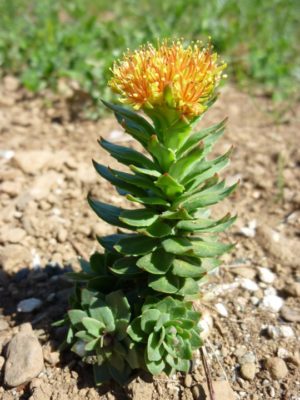Sage, Dan-shen miltiorrhiza (Salvia miltiorrhiza) seeds, organic
Price range: $4.95 through $59.10
Family: Mint (Lamiaceae)
Hardy to Zone 6 to 10, sometimes colder. otherwise grown as a summer annual or overwintered indoors.
(Tan-shen or Dan-shen, Chinese Red Sage, sometimes misspelled multiorrhiza) Herbaceous perennial native to central and southern China to Vietnam. This is the official species. Traditional usage (TCM): circulation stimulant, antistroke, atherosclerosis, menstrual woes. Source of the molecule known as tanshinone. Plant prefers garden soil, sun to part shade, and regular watering. The herb itself is comely, with blue flowers that express for quite a long time during the summer, and red taproots, which are characteristic to the plant (and several other sages like it). Excellent choice for herb gardens throughout the temperate north and a show plant for sure. Sow in fast-draining soil in the full sun. Gratifyingly easy germinator–sow in spring and work up in pots before transplanting to the landscape. Space plants 1 to 2 feet apart.
Packet contains 30 seeds
1 g contains ~540 seeds
5 g contains ~2,700 seeds
10 g contains ~5,400 seeds
Seed certified organically grown










Tom H. (verified owner) –
Grows here wonderfully in zone 7b. Seeds were very easy to sow and plants continue to self-seed. Beautiful flowers and the pollinators absolutely love them.
Upvote if this was helpful (0) Downvote if this was not helpful (0) Watch Unwatch Flag for removal
Question
Bheki@polka.co.za –
Can I plant it in South Africa?
Upvote if this was helpful (0) Downvote if this was not helpful (0) Watch Unwatch Flag for removal
Richo Cech –
yes
Upvote if this was helpful (0) Downvote if this was not helpful (0) Flag for removal
svetap9 –
Hello, when you dig for the roots, do you destroy the plant or do you try to get the bigger roots and leave the smaller ones for the plant to keep growing? Also, is it better to wait a couple of years to try to harvest? Not sure how big a root I’m aiming for. Finally, when I dig the root, do I just dry it and tincture in alcohol or use it fresh? Or any other process? Thank you! P.S. hope it can take a lot of sun dry cold (to about 15 F) in the winter. Thanks again
Upvote if this was helpful (3) Downvote if this was not helpful (0) Watch Unwatch Flag for removal
Richo Cech –
Yes, it is best to dig the entire plant in the autumn, when the tops begin to senesce. In colder zones dig after 6 months to one year (ie a growing season), in warmer zones safe to wait 2 years. various growers do report these as hardy down to zone 3 but i haven’t seen it with my own eyes. YEs, these roots should be dried before use, decocted or made into a tincture. Please read pages 159 to 160 of Making Plant Medicine for deeper herb-specific info on dan-shen.
Upvote if this was helpful (1) Downvote if this was not helpful (0) Flag for removal
Pam Palmer –
Can you use the flowers in tea? I know the root is medicinal. Wasn’t sure about the flower.
Upvote if this was helpful (0) Downvote if this was not helpful (0) Watch Unwatch Flag for removal
Richo Cech –
hi pam, i know of no reference to use of any part of the plant except the root. r
Upvote if this was helpful (3) Downvote if this was not helpful (0) Flag for removal
Silvia (verified owner) –
I planted them last spring, but when I dug out one of the plants in the autumn the roots were not big enough. This year the plants are enormous, like large bushes. When is the best time to dig the roots for tincturing? Can I do it now or should I wait till autumn?
Upvote if this was helpful (0) Downvote if this was not helpful (0) Watch Unwatch Flag for removal
Richo Cech –
Hello Silvia, Normally these are harvested for the roots during fall or spring dormancy. If they are enormous now, it is a good time to take care of them and appreciate the flowers and maybe even harvest some seeds. They are slow to go dormant in the fall, but after the first good frost, then dig them. You will get more root that way and it will be better quality than if you tried to dig them now. Richo
Upvote if this was helpful (1) Downvote if this was not helpful (0) Flag for removal
appalachiatreecrops –
I purchased seeds and grew them out in zone 7 central Maryland. These plants developed beautiful flowers that the bees loved and even reseeded on the bare ground around the mother plants! I have since moved to south-central Pennsylvania and transplanted them into pots. Even with our brutal winter (2016/17) with minus 2-degree Fahrenheit the plants have started new growth and look unphased. Really amazing plant. Thank you!
Upvote if this was helpful (6) Downvote if this was not helpful (0) Watch Unwatch Flag for removal
Lindy –
I was reading that this plant grows in cold areas in China but your site hardy to Zones 9-12. I see that others are having success in zone 6. Do you know anyone growing it in zone 5?
Upvote if this was helpful (0) Downvote if this was not helpful (0) Flag for removal
Richo Cech –
Hi Lindy,
Yes, but the person who wrote that, well, do they actually have any experience with the plant or is it just another botanical echo? In my Zone 8b when its a cold winter they expire and on a less cold year they overwinter. I do think it may help to mulch them. Richo
Upvote if this was helpful (0) Downvote if this was not helpful (0) Flag for removal
Twilah –
I’m very impressed with this plant. I started this plant indoors under lamps and transplanted it out in spring 2020. It did okay, I think I didn’t water it enough though. I’m in west central Missouri, Zone 6b. It somehow survived a record breaking winter weather in early 2021. There were over six days that were below 10 degrees this February. It even dipped down to -15 for a night. Fast forward to now, May 2021. It is absolutely thriving in the heavy late spring rains. The plants are covered in beautiful purple flowers and the foliage is very robust.
Upvote if this was helpful (0) Downvote if this was not helpful (0) Flag for removal
Lew –
Thanks to Strictly Medicinal Seeds, I have several beautiful specimens of Dan Shen in my garden. I was wondering what time of year is best to harvest the roots to maximize potency? Anyone have any suggestions? Thanks in advance!
Upvote if this was helpful (0) Downvote if this was not helpful (0) Flag for removal
Richo Cech –
hello lew, the energy of the plant goes to the flowering racemes when in flower, and to the root during dormancy. Best to dig roots after the plant seeds in the late summer to fall. richo
Upvote if this was helpful (0) Downvote if this was not helpful (0) Flag for removal